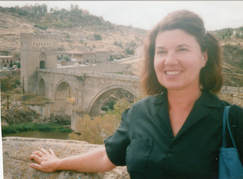 Sherrill & medieval bridge, Toledo, Spain
Sherrill & medieval bridge, Toledo, Spain 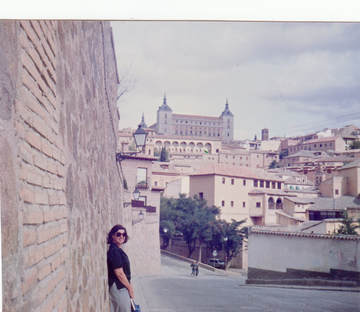 Sherrill in Toledo, Alcazar on hill
Sherrill in Toledo, Alcazar on hill "At least, I'm not trying to drive," Sherrill said after one of those cars nearly clipped us.
Finally, quite lost, I tried my high school Spanish on a tiny black-garbed old woman carrying a large basket up the road. She paused, peered up at me from beneath her shawl, poured out a brief flood of Spanish accompanied by short, emphatic gestures, then resumed her climb. Despite her small size, her legs must have been steel.
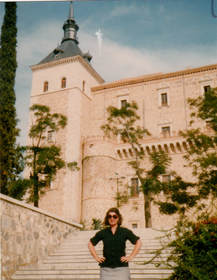 Sherrill at Alcazar in Toledo
Sherrill at Alcazar in Toledo I don't remember seeing any animals in Toledo, not a dog or a bird in the sky, not a cat, although they must have been there. In my memory, the city primarily was stone piled upon stone—except for the El Greco house and museum in the Jewish quarter. To see so many El Greco masterpieces in one place was an overwhelming experience: the passion, the faith, the brilliance of execution, left us dazzled.
One evening, as we sat in the Posada's large two-level dining room, a group came in and settled around a long table on the upper area. They all seemed to be involved with a man in a wheelchair who was positioned at the head. It wasn't until they all were seated at the table that we realized that the man in the wheelchair was Stephen Hawking.
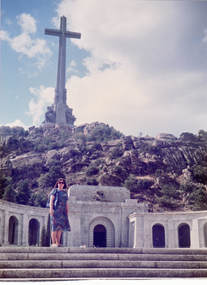 Sherrill at the General Francisco Franco memorial
Sherrill at the General Francisco Franco memorial 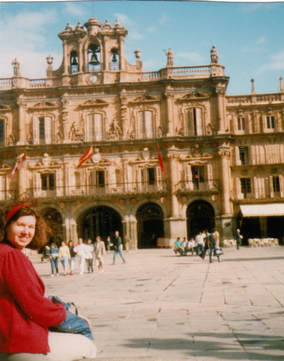 Sherrill, Plaza Mayor, Salamanca
Sherrill, Plaza Mayor, Salamanca "I could live here," I told Sherrill.
She patted my cheek with her hand:
"You'd have to work on your Spanish first, sweetie."
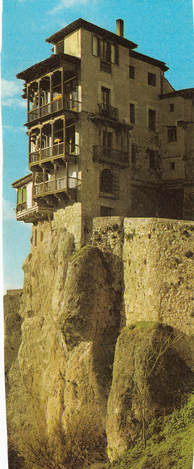 Hanging house, Cuenca
Hanging house, Cuenca "I can't!" she said. It was obvious that if she started rolling backward after making the turn we'd plunge off the cliff.
I got out of the car and guided her as she very slowly backed down. We were scarcely on flat land when a truck charged down the road from the town, clearly unable to stop as it swung around the corners. Sherrill clutched my shoulder.
"What if we'd been up there?"
Instead of driving, we walked up the road to explore the picturesque little town. Unusual and interesting as it was, it wasn't worth dying for--not even to peruse its rare silver reliquaries.
To be continued....
You also might enjoy reading the new bargain-priced e-book of my novel, The Night Action. It has been called the last great novel of an past era. "The novel careens around the night spots of San Francisco's North Beach and the words seem to fly off the page in the style of Tom Wolfe or the lyrics of Tom Waits." The book is available at Amazon and Barnes and Noble. Click on the title for the link.
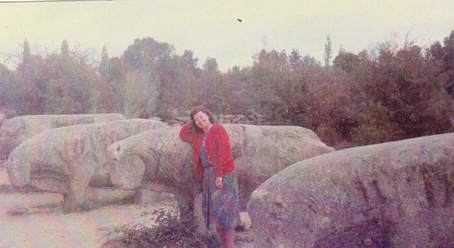
 RSS Feed
RSS Feed